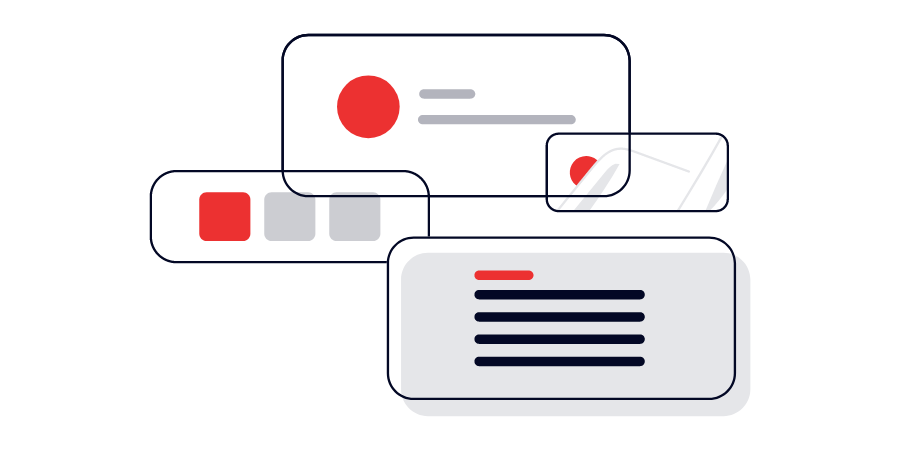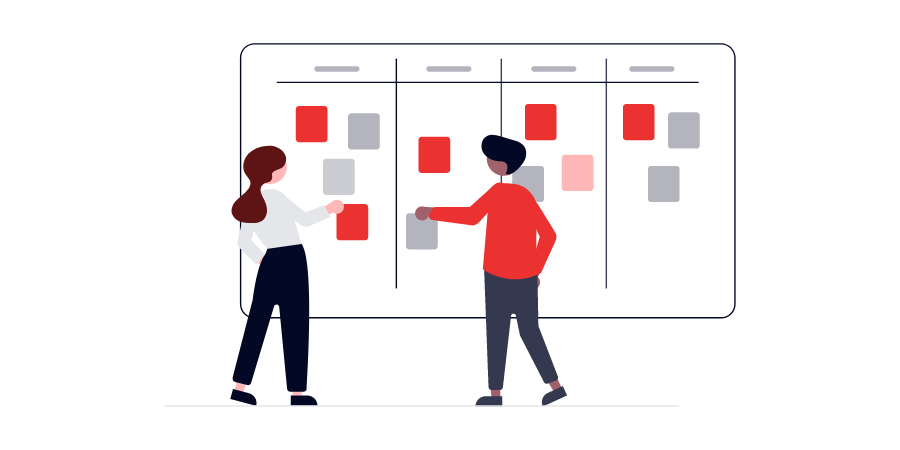![]()
Brought to you by CustomerIQ, the AI platform to turn calls, emails, and tickets into structured insights and answers for product and sales teams. Align every team with the needs of your customer and deliver an exceptional experience with one powerful AI platform. Learn more here.
Today’s guest is Glen Coates, VP of Product at Shopify Core. Glen leads the development of Shopify’s core commerce platform, including the storefront, checkout, backoffice, marketing, and analytics tools. Glen joined Shopify in May 2019 when the company acquired Handshake, and he has been in the Vice President role since October 2020
As of this writing, over 1.7 million businesses in approximately 175 countries use Shopify to power their business. Over the years, Shopify has transformed from a small startup into a major player in the e-commerce industry, continually innovating and expanding its services to meet the evolving needs of online merchants worldwide.
Shopify was founded in 2006 by Tobias Lütke, Daniel Weinand, and Scott Lake. However, its origins trace back to 2004 when Lütke and his friends attempted to open an online snowboarding equipment store called Snowdevil. Dissatisfied with existing e-commerce solutions, Lütke, a programmer, decided to build his own e-commerce platform.
The Shopify platform was officially launched in 2006, evolving from the software created for Snowdevil. Since then, Shopify has experienced significant growth and introduced several key features:
- In 2009, Shopify launched its API and App Store, allowing developers to create applications for the platform.
- In 2010, Shopify released its first mobile app for iOS, enabling merchants to manage their stores on mobile devices.
- In 2013, Shopify introduced Shopify Payments, eliminating the need for third-party payment gateways.
- In 2015, Shopify went public, listing on both the New York Stock Exchange and Toronto Stock Exchange.
- In 2017, Shopify expanded into brick-and-mortar retail with its iPad-based point-of-sale system.
As of 2024, Shopify has grown to become one of the largest e-commerce platforms globally. Some key statistics that demonstrate its scale:
- Over 1.7 million businesses in approximately 175 countries use Shopify.
- Shopify has over 8,300 employees as of December 31, 2023.
- The Shopify App Store features over 13,000 apps.
- Shopify’s market value was estimated to be around $100 billion in 2024.
I was so excited to learn that Mike Belsito, cofounder at Product Collective and our collaborators here at Behind the Product, sat down with Glen to dive into how Shopify builds product.
Here’s what we learned:
- What it’s like to ship product at Shopify
- This year’s theme of “unified”
- Shopify’s new AI Assistant
- What it’s like implementing AI into existing products
- The unique “fresh” perspective for Shopify product teams
- Advice for PMs starting to work in AI
Please enjoy Mike’s conversation with Glen Coates, VP of Product at Shopify.
Tell us a bit about your background and what brought you to Shopify

I’ve been at Shopify just about five years now, which is a pretty cool milestone. I joined Shopify through an acquisition in 2019. Before that, I ran a startup in New York called Handshake, which was a commerce platform like Shopify, but it was exclusively focused on wholesale. We were acquired to help make Shopify better at wholesale, which I’m proud to say that we have actually done now. And before that, I was a video games programmer and a computer scientist and all that kind of boring, nerdy stuff.
What impact does Tobi (CEO) have on product?

Tobi occasionally shows up with what he wouldn’t describe as mandates, but I would definitely describe them as mandates. He’ll come in with these great ideas that he thinks we should do, and although it can be a bit of a scramble, it tends to be great in the end. For example, in 2022, he noticed that even he, along with a few of us, was finding it hard to stay on top of what was actually changing in Shopify. People would ask us about the big things we shipped over the last year, and honestly, we’d look around and think, “I know it was a lot of stuff, but I can’t quite remember.”
This led us to realize that we weren’t doing a great job of telling the story of the product—how it’s changing and getting better for our merchants. With millions of merchants across different industries and countries using Shopify in various ways, it’s clear that not every release is relevant to every merchant. So Tobi’s idea pushed us to think about how we could package up all the updates and make it easier for our merchants to see what new features had come out in a way that is relevant to their specific needs, whether they’re in retail or wholesale.
It’s so easy in product to get trapped in a cycle of “build the thing, ship the thing, next.” Sometimes you just need to stop and celebrate the wins a little bit. One way we’ve done this is through Editions, which has become a bit of a celebration for us. It’s a way to show how the product is getting better in really cool ways and also a way for us to flex our web storytelling muscles. Shopify is a web-first company, and we pour a lot of love and care into these Editions pages, using new animation, 3D tech, and other innovations to make each page a love letter to the web.
What’s this year’s theme?

This year’s theme is “unified.” We chose this theme because our software has grown to encompass a wide range of functions: we operate online and in-person through point of sale, cater to B2B and direct-to-consumer (D2C) markets, and provide solutions for both domestic and global operations. We also support various platforms, including desktop and mobile. This diverse functionality is fantastic for merchants who can expand their business capabilities through a simple click in Shopify, eliminating the need for multiple software purchases and complex IT integrations.
However, the value of being a one-stop shop for all these operations only truly shines if the features work seamlessly together. For instance, if a merchant uses point of sale and subscriptions, they should be able to handle subscriptions directly through the point of sale. Similarly, if they’re dealing with B2B and use a specific payment method, those should be compatible.
A prime example of this integration is our headline feature for this edition, “Markets.” We’ve evolved the existing Markets feature, which used to simply manage regional settings—like those for France or Germany—to now encompass a broader go-to-market strategy. This includes wholesale, retail, and other market segments. With the new command center in the Shopify admin, merchants can view and control all their different settings in one place, simplifying both the setup and management processes. This central hub helps tame the complexity of their business, allowing them to concentrate on what truly matters: running their business efficiently and effectively.
Ultimately, our goal with this unified approach is to make it simple for someone who just wants to sell products, like candles, to focus on their craft without getting bogged down by the complexities of software management.
Tell us more about Sidekick

We’ve actually rolled out Sidekick, which is our AI assistant, to a few thousand merchants so far, and we’re progressively extending it to more. The really cool thing about rolling Sidekick out is that we had all these hypotheses about what people would want to do with it—like creating discount codes, changing theme colors, and so on.
What’s been fascinating is observing the actual conversations people have with the AI assistant, and some of it isn’t even software-related. For instance, people ask questions like, “What could I do to grow my business?” or “How do I find more customers?” We’ve encountered some unexpected scenarios too. For example, there was an instance where payments had failed to process, so orders were received, but the payments weren’t captured. Merchants were seeing the orders were in, the payments were authorized but not finalized, and they actually asked Sidekick for guidance on whether to ship the orders or not.
It’s almost like having a co-founder with you, where you can ask, “Hey man, what do we do here?” This has provided an interesting lens into entrepreneurship, revealing that many merchants are doing it alone and may not have a co-founder to bounce ideas off. So much of Shopify is about delivering functional software, but Sidekick introduces a very human element by offering an open-ended feature, and it was hard to predict how people would actually use it.
How is AI shaping the Shopify roadmap?

Right now, best practices for building with LLMs and training models are evolving at breakneck speed. You can quickly create compelling prototypes that seem quite smart and sophisticated. However, transitioning from a 70% quality prototype to a full production-ready model at 90-95% quality is surprisingly tough. It’s not like the traditional software development curve we’re used to; it’s brutal and challenging in unique ways.
The pace at which AI models and techniques are advancing necessitates a different mindset. It reminds me of when video games like Doom or Quake first came out—they were designed knowing that the current hardware couldn’t run them well. Yet, developers anticipated that future graphics cards and computers would catch up, making the games run smoothly eventually. We’re in a similar phase with AI. We need to build with an awareness that today’s tools might not fully support our vision, but soon, as technology progresses, everything will come together more efficiently. It’s a little uncomfortable, like skating to where the puck is going, but we’re confident that improvements are on the horizon that will enhance what we’re building now.
What’s unique about product management at Shopify?

We’re currently in the middle of a major release, which is a substantial upgrade to our theme platform. This update includes new style support, and while it might seem simple, it’s a significant improvement for users who want to customize their theme and storefront aesthetics. This project has been quite the journey; we thought we had nailed the technical aspects a few times, only to realize through feedback and challenges from Toby that we could do better.
Each iteration involved going back to the drawing board. This is something that happens often where PMs and engineers get so used to the complexities of a problem that they become numb to it. You stop seeing it from a fresh perspective – how confusing it might actually be for someone encountering it for the first time.
These “go back and make it better” sessions with stakeholders like Toby were crucial. They often highlighted that what seemed simple to us wasn’t actually simple for fresh eyes. I’m incredibly proud of the team for taking that feedback seriously, revisiting their work multiple times, and pushing to create something we can all be proud of.
I can imagine they’re crunching away as we speak to get it done. When you’re part of a company that’s performing well in the market, like Shopify, it’s beneficial to remember the hustle from startup days or from times when a company was in a tight spot. It’s about pushing ourselves and meeting deadlines. Even though missing this particular edition wouldn’t be the end of the world as there’s always another edition coming up, it’s important to push and get things done. I really commend the team for their dedication and drive on this release.
What advice do you have for those starting to implement AI in their product?

Recognize that LLMs (Large Language Models) are essentially text in, text out machines—they excel at generating text based on the input they receive, but they can also “hallucinate,” meaning they sometimes produce outputs that aren’t accurate or grounded in the data.
The easiest and most practical place to start is with applications where there’s a lot of text content that users find annoying or challenging to navigate. For instance, you can use an LLM to make your help documentation more accessible and context-sensitive. Every business has an enormous amount of help docs that are tedious for users to sift through to find answers. LLMs are great for this—load all that information into a vector database to help your users get quick answers. This approach will give you your first experience with some fundamental concepts like vector search, prompt engineering, and evaluations.
By starting with these simpler implementations, you can learn important basics and develop a foundation in using AI. It’s like taking baby steps—get your sea legs in these low-risk scenarios before moving on to applications where mistakes could have serious consequences. For example, don’t let the LLM perform actions like clicking the save button on something that could potentially cost you money if it goes wrong.
What should PM’s think about in their journey into AI?

In the journey into AI, product managers should think about how AI can enhance content generation and media creation, like the way we’ve implemented AI for image editing, helping users create professional-looking products. We’ve already seen millions of these images edited and live on our platform, which is pretty exciting.
Another critical aspect to consider is how AI can bridge the gap between novice users and advanced users. This has always been a challenging balance to strike. For example, at Shopify, we have a segmentation editor that’s incredibly powerful but also quite complex since it involves writing code expressions. With AI, users could simply write their needs in plain English, like “my customers in New York who’ve spent more than $5,000,” and the AI translates that into the appropriate code.
This smoothens the user adoption curve and helps progressively disclose complexity more effectively. Another thing for PMs to consider is how the integration of AI operates at the system level. For platforms like Shopify that serve as hubs for various business applications, it’s essential to determine at which layer of the stack AI should be integrated to ensure it connects different apps and features seamlessly.
Moreover, AI can facilitate interactions among different tools in the platform by selecting the right tools for specific jobs or even combining multiple tools to complete complex tasks. As we continue to develop and invest in our AI initiatives, especially with projects like Sidekick, there’s tremendous potential to explore these integrations further.
Any parting advice for product teams?

If there’s one piece of parting advice for product teams, it’s to really double down on the value of having a tightly integrated product. It’s easy for product managers to focus on shipping new features and overlook the importance of ensuring that these new additions work seamlessly with existing functionalities. This might seem like the unsexy part of the job, but it is incredibly important to users.
Additionally, this is an intriguing time for software teams to experiment with and learn from new technologies like AI and large language models (LLMs). No one has all the answers yet; we’re all figuring things out continuously. Sometimes we hit roadblocks and get frustrated, thinking maybe we’re behind, but then we talk to partners at OpenAI or Google and discover we’re actually right on the cutting edge. So, be a part of figuring it out. This is an excellent opportunity to understand the nuances and weirdnesses of these new tools and learn how to incorporate them effectively.
A huge thank you to Glen Coates for sitting down with us and sharing his time and expertise. You can follow along with Glen on Linkedin here.


